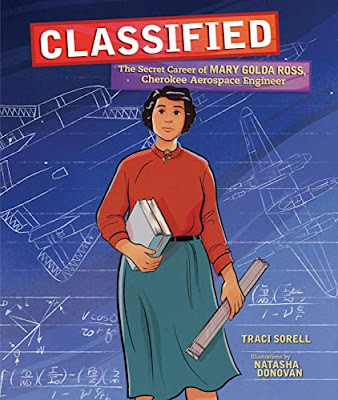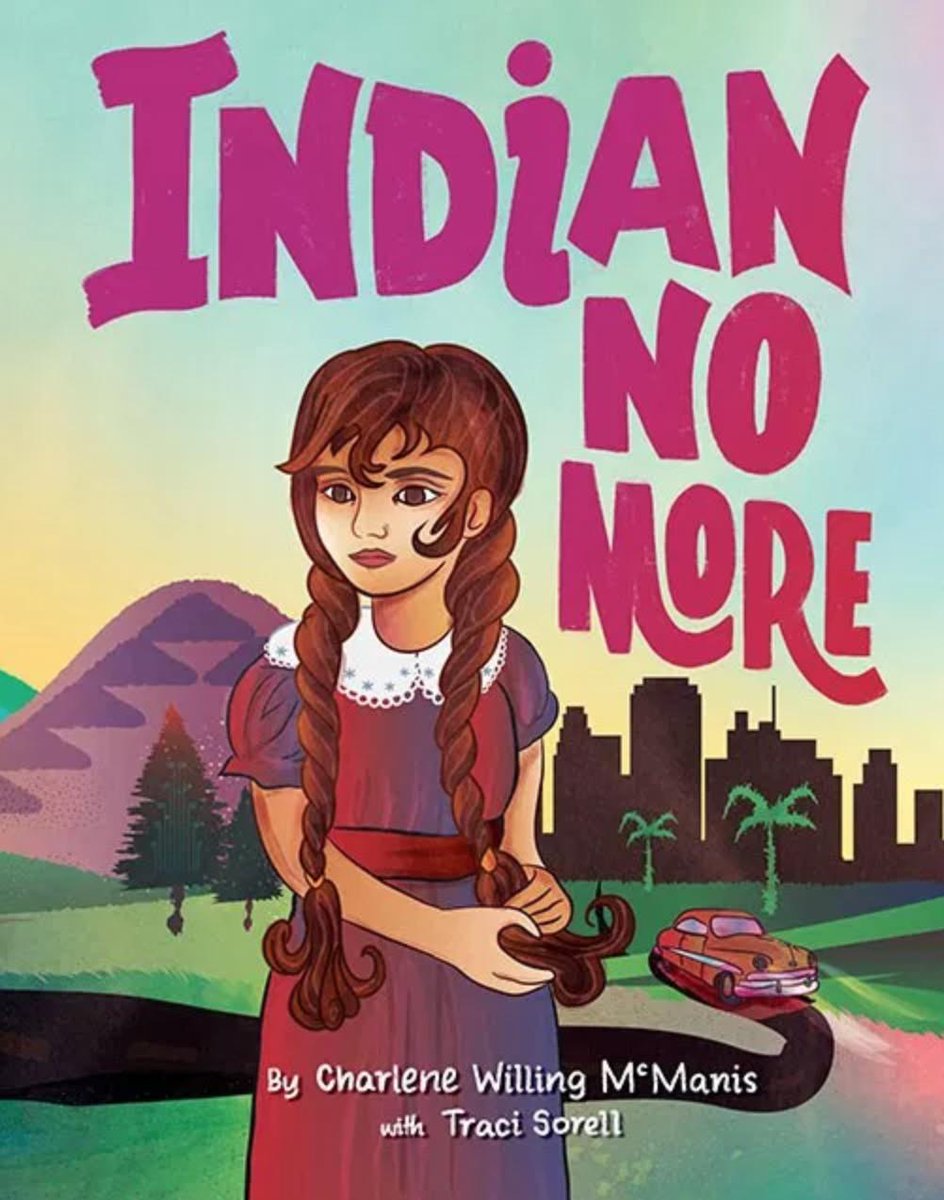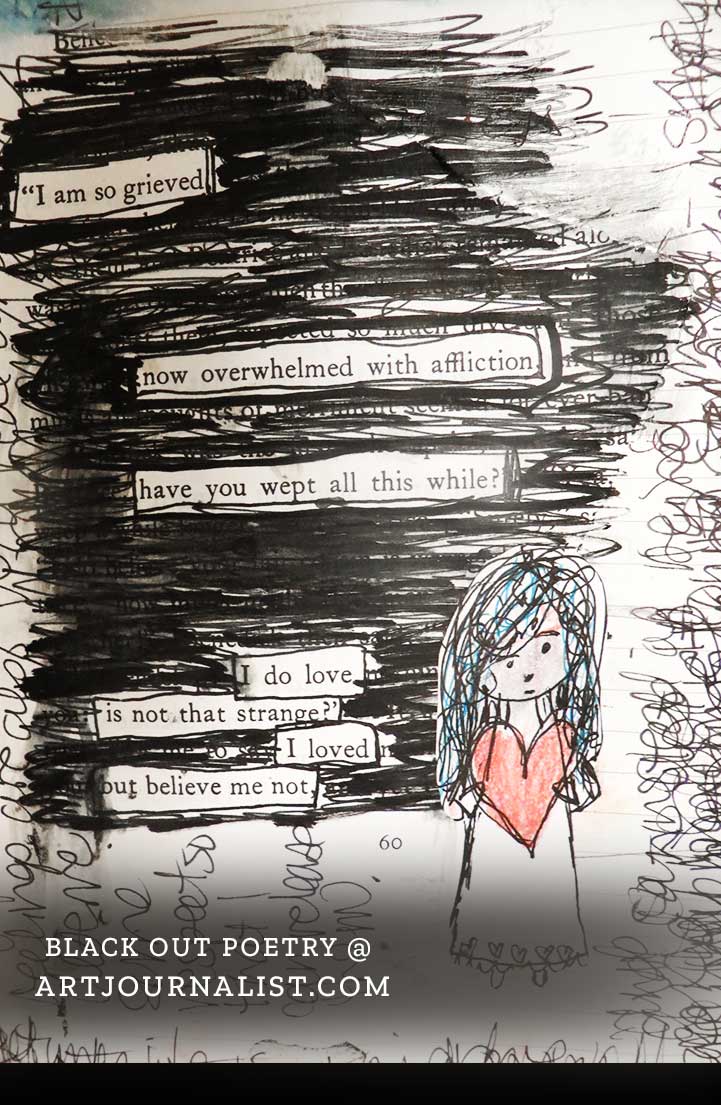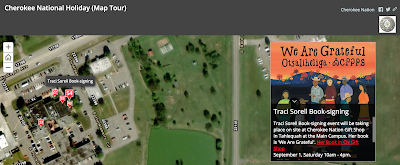Editors Note: On January 25, 2025, the American Indian Library Association (AILA) held its Youth Literature Award Ceremony in Phoenix. I am pleased to share the remarks given by Traci Sorell when she received the American Indian Youth Literature Honor Award in the picture book category for Contenders: Two Native Baseball Players, One World Series, and the Honor Award in the middle school category for Mascot, and for She Persisted: Wilma Mankiller.
****
AIYLA Medal Acceptance Remarks
Traci Sorell
ᏏᏲ ᏂᎦᏓ. Traci Sorell ᏓᏆᏙᎠ. ᏥᎡᏥ. ᏥᎩᎶᎯ. ᏥᏗᎪᏪᎵᎩ.
Wado for the warm welcome. It is wonderful to be here at the American Indian Youth Literature
Awards (AIYLA) in community with tremendous storytellers from Native Nations across this
continent. I am humbled and honored.
Although my family is back home supporting my son in his school competitions, nothing I create
is done without them, my ancestors, my community, and ᎤᏁᎳᏅᎢ.
As many of you know, I did not come to writing for young people as anything other than a
mother seeking to solve a problem. In many ways, I’m grateful for that naïveté. Had I known the
vulnerability the creative life would require, I assure you that I would have been less enthusiastic
about figuring out this industry and how to write. But forces greater than myself are in charge, so
here I am.
With that, I owe a deep ᏩᏙ to the American Indian Library Association (AILA) for their work,
their independence, and their commitment to honoring Native created stories. I always tell others
that your recognition and what I hear directly from readers mean the most to me. It’s the truth.
I want to quickly say how thankful I am that AILA selected five previous titles I worked on for
recognition. We couldn’t have an in-person ceremony for those with the pandemic, so I offer my
gratitude to those previous AIYLA committees now.
My literary agent Emily Mitchell has assisted me in ways too numerous to list. ᏩᏙ, Em!
For the three books honored this year:
Wilma Mankiller, a chapter book about my shero, was incredible to write. I had planned a PB bio
about her when Jill Santopolo at Philomel reached out to ask if I was interested. How could I not
accept? I had all the research ready and loved the She Persisted series’ focus on the person’s
younger years laying the foundation for future accomplishments. ᏩᏙ to Jill and Talia Benamy at
Philomel, Illustrators Alexandra Boiger and Gillian Flint, Penguin’s School & Library team
(especially Summer Ogata), and Chelsea Clinton for creating the series.
Contenders, the dual biography of pro baseball players Charles Bender (Ojibwe) and John Tortes
Meyers (Cahuilla), wouldn’t exist without my mother giving me a love of the game and my
husband telling me about the accomplishments of these incredible athletes. The book would not
be the beautiful, strong story it is without Arigon Starr’s incredible art. She was the only person I
wanted to co-create with, and I’m grateful that our editor Namrata Tripathi and baseball loving
art director Jasmin Rubero agreed. Arigon’s line work, ability to make each person’s face unique
(a rarity in most kidlit books), and her centering of each man’s Native identity took the story
beyond anything I dreamed possible. Our all-woman team at Kokila enjoyed making this book
together. Shout out to Tessa Meischeid, our Penguin publicist, for connecting the book with
NPR’s Weekend Edition and several broadcasts in Canada including the CBC. I’m grateful to the Tulsa Artist Fellowship for bringing Arigon to live temporarily in Tulsa, so we could meet in the
first place.
Mascot wouldn’t exist without poet Charles Waters who dreamt up the idea for this verse novel
and asked if I’d co-author with him. It’s our pandemic creation. Our Charlesbridge editor
extraordinaire Karen Boss made this book as polished as possible. It’s the magic she does with
any story she reads – as evidenced by other books among AIYLA’s present, past and, I suspect,
future awardees. Nicole Neidhardt’s incredible cover art draws readers to open the book, and
Diane Earley’s design with gritty-feel cover are top notch too. Meg Quinn, Donna Spurlock,
Jordan Standridge, Jaliza Burwell, and the rest of the Charlesbridge sales and marketing team
never failed to get this book into all the right hands.
Again, my profound gratitude to the AIYLA committee for all the hours you devote to this work.
ᏩᏙ to Penguin for supporting me to attend this wonderful ceremony. To celebrate with so many
Natives who live here locally makes this extra special. ᏩᏙ!

















